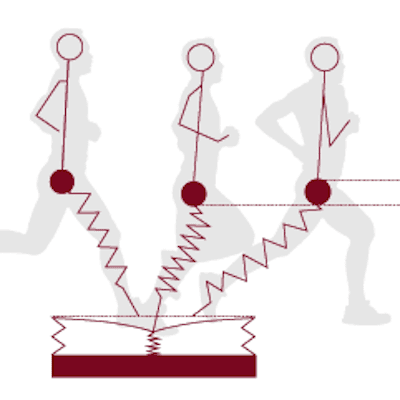


Ian Jeffreys PhD, FNSCA, ASCC, CSCS*D, FUKSCA

So much of our success depends upon effective and consistent behaviours: the coaches’ success in developing and maintaining a positive environment, the athletes’ in terms of their commitment and adherence to the programme, the hierarchy in terms of allocating time and resources etc. Where the necessary behaviours can be elicited, success is more likely, but where they are not, success can often be difficult, if not impossible to achieve. Quite clearly, an insight into how to influence and change behaviours successfully becomes a key skill for an effective coach. However, this is far from easy and is often exacerbated by a fundamental attribution error that can blind us to the causes of behaviours and – subsequently – potential solutions.
When we attempt to explain people’s actions, we tend to attribute these to their internal beliefs and motivations. However, a great deal of behaviour can only be fully understood and explained when external factors are considered. We have to consider that virtually everything we do exists in a web of connectivity and can only be fully understood when the ‘incentives’ accruing within any environment are fully considered and understood. Unfortunately, every time we fail to consider the incentives when looking for explanations, we fail to comprehend many of the underlying causes of behaviours. In short, we need to stop attributing behaviours and actions solely to the individual and consider the circumstances in which the behaviours are occurring.
Incentives can take many forms: prizes, rewards, means to career progression, hiring pre-requisites, rules and regulations, codes of practice, fines, punishments and so on. Some are obvious, but others are more subtle and may not be at first clear. However, whatever form they take, incentives have a powerful influence on behaviour and actions. Indeed, many of the challenges we face in strength and conditioning can be attributed to incentives: why do athletes fail to engage with strength and conditioning even when the research demonstrates its value; why are so many S&C coaches poorly paid; why, with so much research being generated, are we not answering the key questions we need to address; why are fewer coaches now submitting articles to journals; why are we finding bridging the gap between theory and practice so difficult?
This is not to say that finding the solutions to these challenges is easy: navigating the world of incentives can be extremely challenging, but unless we do face them, many of these challenges will stubbornly fail to be solved. Importantly, identifying incentives can provide opportunities – if we can identify and control the incentives, we can influence the behaviour of an individual, a group, an organisation or even an entire profession.
What is crucial is that whenever we consider a situation, we need to look beyond the individual and consider what incentives are present in the scenario. What are the incentives driving these actions, from where do they emanate, what is the root cause, what would we need to do to change these? In some circumstances these may be immediately clear, but in others they may be deep, layered and even historical – and consequently may not be immediately obvious. However, what is evident is that, unless we can change the incentives it will be extremely difficult to change the behaviours. However, the good news is that research from a range of disciplines suggests that if we can get the right incentives into a system, it will start to generate the right behaviours.
A key to the effective use of incentives is the concept of synergy. In many instances, the impact of incentives can work for one individual/group but against another. Incentives will always work best when there is synergy – where the impact of the incentives will have a beneficial impact for all concerned. Where we can achieve synergy – for example, where athletes and coaches can see and appreciate the benefits of the S&C programme success – the behaviours required for the realisation of goals are far more likely to be present and consequently, the likelihood of success is greatly increased. Conversely, where there is a lack of synergy, the opposite is the case and success becomes a challenge – indeed, many of the issues outlined earlier can be explained by a lack of synergy.
Now the right incentives can be a powerful tool, but they must never be seen as a panacea. One key factor in understanding incentives is that they are changeable in nature – we can never be sure how they will affect a system and an individual. The same incentives are unlikely to work in every scenario and always carry the risk of unintended consequences – they need to be well considered and handled with care. In S&C, as in many professions, we like to talk in terms of ‘best practices’ and spend time searching ensuring that these underpin everything we do. However, although in some instances this can be a clear strength, whenever incentives are considered – or indeed whenever systems are considered – the idea of a single best practice can indicate an inability to grasp the importance of varied circumstances. We must keep uppermost in our mind the fact that the usefulness of any idea, theory or practice is dependent upon a range of interdependent factors that are active in some situations but not others.
Even in a situation where we have achieved synergy in our incentives and where the system is working well, we must never consider this as the end of the story – we can never afford to rest on our laurels. It is always important to remember that any time human emotions and interactions are concerned, incentives are not a static entity and can change or lose their impact over time. Consequently, the system needs constant oversight, because all incentive systems can begin to decay.
As strength and conditioning coaches, we face many challenges, many of which defy explanation and confound us time after time. Until we start to consider the circumstances and delve into the incentives present, we may never adequately solve these challenges. This is never easy but it does provide an opportunity to reframe our approach and to address the underlying causes. At whatever level, an understanding of incentives can be a powerful tool to elicit change – whenever we can envisage a better situation, we can start to engineer it with effective incentives.

Ian is a prolific coach, author and educator who consults extensively with several international sports organisations. He is President of the NSCA, Editor of the UKSCA's journal, Professional Strength and Conditioning, and is also on the Editorial Board for the NSCA's Strength and Conditioning Journal, and the Journal of Australian Strength and Conditioning.


